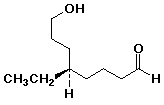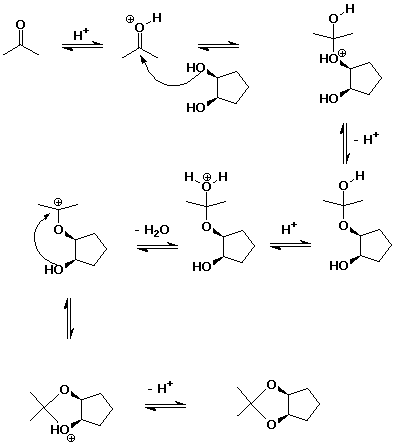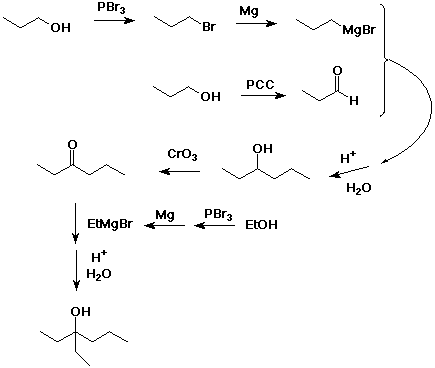Carey, pages 745 - 754
Problems 17.20 - 26 , 28 - 43 , 45 - 49
1. Write complete names
for each of the following:
a) 
(R)-5-ethyl-8-hydroxyoctanal
b) 
4,4-dimethyl-2,5-cyclohexadienone
2. Write a complete mechanism for the acid-catalyzed formation of the cyclic
acetal between acetone and cis-1,2-cyclopentanediol.
Explain why an acetal is not formed with the trans isomer.

It is sterically difficult for the trans-1,2-diol to get
both OH groups to connect to the same carbon of acetone.
3. Develop a synthetic sequence for 3-ethyl-3-hexanol that uses as organic starting
materials only alcohols having four carbons
or fewer.

4. Explain how acetone in the presence of radioactively-labelled
water (H2O-18) slowly becomes radioactive
itself.

The hydration reaction (addition of water as a nucleophile)
does occur, although the equilibrium constant strongly favors acetone rather
than 2,2-propanediol. Reversal of the reaction could eliminate either normal
water or radioactive
water.






